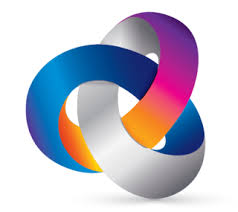ICT
2. INTRODUCTION TO COMPUTERS
2.1. uses of ICT in different sectors
Education is the process of acquiring knowledge and skills, in the traditional model, people learn from others such as parents, teachers and employers. Many forms of printed materials such as books and manuals are used in learning. Today educators also are turning to ICT to assist with education.
As the cost of computers and other ICT tools drops, many schools and companies can afford to equip labs and class rooms with computers.
E- Learning
Ø Sometimes the delivery of education occurs at a place while the learning occurs at other locations (distance learning). e.g. Students can take classes on web. More than 70% of colleges in developed countries offer some type of distance learning classes. A few even offer entire degrees online.
Ø Students use software to assist with learning or complete assignment.
Ø Through ICT there has been enhanced class room teaching through use of presentations as well as projectors to deliver the information in a more convincing way.
Schools and Institutions use computers to typeset examinations.
Ø Online registration and admissions: Most institutes and schools have opened up websites which offer online registration and admissions without visiting the institute physically.
Ø Ubiquitous learning (through virtual mentors / teacher)
Ø Research. Teachers and students use the internet to carry out research on various topics.
Ø Communication (Teacher-students / Teachers - parents communication) through e-mail.
Ø Online discussion (video-conferencing).
E- Commerce.
E - Commerce is the general term used for companies trading online. It is a shorter way of saying electronic trading. The “E” is for Electronic and commerce means trading.
The prevailing E-commerce activities have been divided into 3 major categories Business-to-Consumer (B2C)
In a Business-to-Consumer E-commerce environment, companies sell their online goods to consumers who are the end users of their products or services. Usually, B2C E-commerce web shops have an open access for any visitor, meaning that there is no need for a person to login in order to make any product related inquiry.
1. Business-to-Business (B2B)
In a Business-to-Business E-commerce environment, companies sell their online goods to other companies without being engaged in sales to consumers. In most B2B E-commerce environments entering the web shop will require a log in. B2B web shop usually contains customer-specific pricing, customer-specific assortments and customer-specific discounts.
2. Consumer-to-Business (C2B)
In a Consumer-to-Business E-commerce environment, consumers usually post their products or services online on which companies can post their bids. A consumer reviews the bids and selects the company that meets his price expectations.
3. Consumer-to-Consumer (C2C)
In a Consumer-to-Consumer E-commerce environment consumers sell their online goods to other consumers. A well- known example is eBay.
Health
Nearly every area of health care uses computers whether you are visiting a family doctor for a regular check-up.
Ø Hospitals and doctors use computers to maintain patients records.
Ø Computers monitor patients" vital signs in the hospital room and at home.
Ø Computers and computerized devices assist doctors, nurses and technicians with medical tests.
Ø Doctors use the web and medical software to assist with researching and diagnosing health conditions.
Ø Doctors use e-mail to correspond with patients.
Ø Pharmacists use computers to file insurance claims.
Ø Surgeons use computer-controlled devices to provide them with precession during operations such as for laser eye surgery and robot assist heart surgery.
Ø Surgeons implant computerized devices, such as pace makers that allow patients to live longer.
Ø Many websites provide up-to date medical fitness, nutrition or exercise information. These Websites also maintain lists of doctors and dentists to help you find the one that suits your need.
Ø They have chart rooms so you can talk to others diagnosed with similar conditions.
Ø Websites even allow you to order prescriptions online. An exciting development in health care is telemedicine, which is a form of long-distance health care.
Ø Through telemedicine, Health care professionals in separate locations have live conferences on computers e.g. doctors at another location to discuss a bone X-ray live images of each doctor along with the X-ray are displayed on each doctor's computer.
Security
Ø Use of CCTV cameras to monitor supermarkets for shop lifters / thieves and to monitor crucial buildings like banks, parliament e. t. c.
Ø Use of traffic camera to track traffic offenders.
Ø Use of biometric devices like finger print scan, iris scan to keep records of right employees.
Ø Mobile phones have tracking records used to track down rebels and suspected criminal.
Ø Walkie talkies that are used in communication by armies and police.
Ø Surveillance cameras that help in capturing criminals.
Computers are used by police and other security
